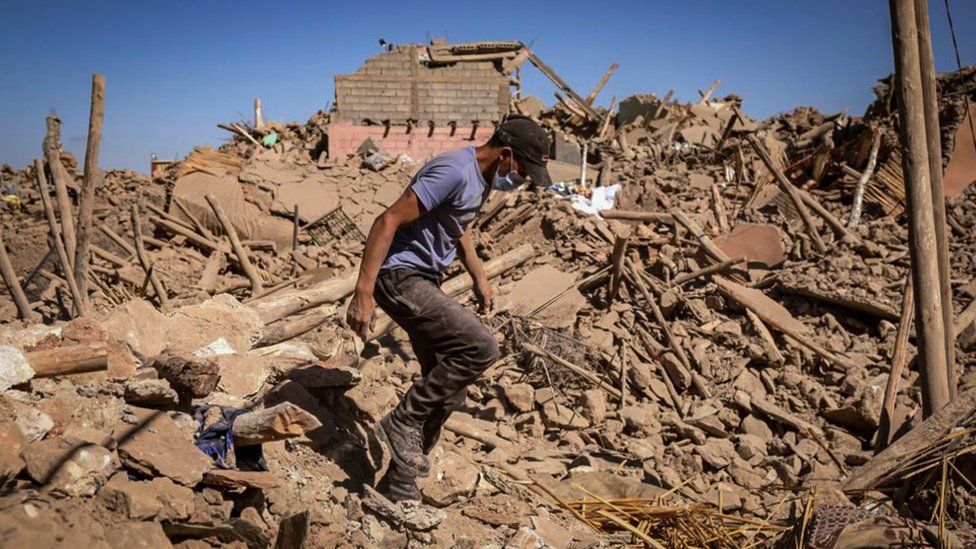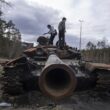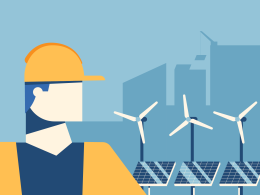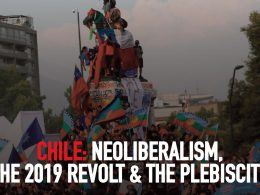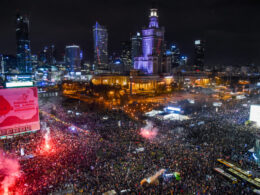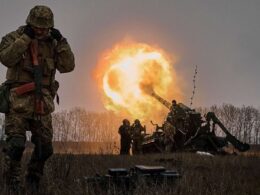By Arno D, PSL/LSP (our sister organisation in Belgium)
On Friday 8 September, a terrible earthquake measuring 6.8 on the Richter scale struck the Marrakesh-Safi region of Morocco. While the city of Marrakech more or less escaped, many villages in the Atlas mountains were totally devastated by the disaster, which left almost 3,000 people dead and twice as many injured. Material damage is estimated at 10 billion euros, or 8% of the country’s GDP.
The scale of the disaster’s impact, both the number of dead and injured and the material damage, is too easily attributed to tragic coincidence. Nature reminds us how small and vulnerable we are, and we can do nothing to prevent it. But this is only partially true. Carmia Schoeman, who holds a master’s degree in landslide geology and is a member of WASP (ISA in South Africa), reminded us at the time of the earthquakes that struck Turkey, Syria and Kurdistan last February: “In the study of geohazards, we have a saying that earthquakes don’t really kill people, it’s the buildings that do.”
In the areas affected, the standards that should have ensured that buildings were more resistant were not respected. Yet the region has already experienced other major earthquakes, notably in 1960 and 2004, due to Morocco’s position astride the African and Eurasian tectonic plates. Worse still, many of the villages in the Atlas mountains, which were hardest hit because they were located in the epicentre of the disaster and had a rustic architecture, were largely inaccessible to the emergency services due to the lack of well-developed roads.
A disaster made worse by inequality
This is all the more criminal when you consider that the worst affected regions are also the poorest. Per capita GDP in the Marrakech-Safi region is only half the national average. The population is mainly made up of poor farmers living off subsistence farming. Most have no insurance. Although the country has a fund to combat the effects of natural disasters (FLCN), the compensation scheme in place since 2020 is not capable of disbursing more than €100 million a year, according to the World Bank. Not to mention the fact that compensation requires administrative procedures that are impossible to carry out in these remote regions where the State has little presence.
These insurance problems are reminiscent of the damage caused by the floods in Belgium in July 2021 and the unwillingness of insurance companies to compensate victims. The comparison does not end there: while the earthquake was not the result of global warming, the floods that devastated Libya at the same time are a reminder that natural disasters are likely to increase in the years to come, heightening the need to build solid infrastructures in the face of the perils that lie ahead.
But current conditions in Morocco do not allow for this. While Morocco is the fifth-largest economy on the African continent and the continent’s second-largest investor, it is also the most unequal country in North Africa. The country’s three richest billionaires alone were worth $4.5 billion in 2018, according to Oxfam, and the increase in their wealth in one year is equal to the consumption of the 375,000 poorest Moroccans over the same period.
All this is due to a global economic policy that is entirely open to the whims of the market, particularly under the impact of the structural adjustment plans of the 70s and 80s. At the time, in response to the debt crisis, the developed capitalist countries entrusted the International Monetary Fund (IMF) and the World Bank with the task of imposing strict financial discipline on over-indebted countries, including the privatisation of large parts of the economy, such as transport.
In 2011, the country, like many others in North Africa and the Middle East, experienced a powerful wave of protest against the regime, the “20 February movement”, in the face of mass unemployment affecting young people in particular and a situation of general socio-economic despair — the result of the policies mentioned above. Although the movement was kept under control, it continued to fuel a certain spirit, which manifested itself once again in the Rif region in 2016. These mass movements were a sign of the determination of large sections of the population to fight against the dictatorial regime of King Mohamed VI, which above all supports the Moroccan and imperialist elites who plunder the country at the expense of the population. However, the repressive power of the regime and the lack of a political organisation capable of offering an outlet to the discontent of the masses meant that the movement failed. Nevertheless, the spirit of protest remains strong in Morocco.
This new dramatic element has added to the reasons to be angry, making it more necessary than ever to build a broad-based workers’ organisation capable of organising the population around a programme for socialist change. By taking the commanding heights of the economy into democratic public ownership the working masses of Morocco could plan the production and allocation of society’s resources in order to meet the vital social needs of the population and, through the construction of high quality housing and infrastructure, protect it against further disasters of this kind.





